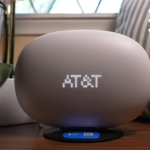Dirty Electricity, also known as electrical pollution, refers to the presence of irregularities or distortions in the normal electrical current within a wiring system. These distortions, which deviate from the standard 50/60 Hz alternating current (AC) waveform, can be characterized by rapid fluctuations, spikes, and surges. This phenomenon results in a more complex waveform than the smooth, regular sine wave that is typically expected from electrical lines.
Sources of Dirty Electricity
Dirty electricity can originate from a variety of sources both inside and outside a home or building. Internally, it can be generated by a range of modern electrical devices and appliances that require a converter to change AC to direct current (DC), or to alter the AC voltage. These include items such as computers, printers, fluorescent lighting, dimmer switches, and energy-efficient appliances. Externally, it can come from nearby industrial machinery, wireless telecommunication devices, and even power lines themselves.
The increase in the use of devices that manipulate electricity to operate efficiently and effectively has inadvertently contributed to the generation of dirty electricity. This is particularly noticeable in the shift towards energy-saving devices and systems, which, while beneficial for reducing energy consumption, often produce higher levels of electrical pollution.
Implications of Dirty Electricity
The implications of dirty electricity are multifaceted, spanning from potential health risks to impacts on electrical equipment. There has been growing concern about the possible health effects of prolonged exposure to dirty electricity. Some studies and anecdotal evidence suggest a link between exposure to electromagnetic fields (EMFs), including those from dirty electricity, and various health issues like headaches, fatigue, concentration difficulties, and even more severe conditions like cancer. However, it is important to note that the scientific community is still debating these claims, and there is no consensus on the extent to which dirty electricity poses a health risk.

Want to Slash Your EMF Health Risks?
Want to Slash Your EMF Health Risks?
Good! Learn the one small change you should make right now.
From a technical perspective, dirty electricity can interfere with the proper functioning of electrical equipment. Sensitive devices, particularly those in industrial or medical settings, can be affected by these distortions, leading to malfunctions or reduced efficiency.
Measuring and Detecting Dirty Electricity
The measurement of dirty electricity is typically done using specialized meters that can detect the high-frequency voltage transients and harmonics on electrical wiring. These meters are designed to pick up frequencies that are higher than the standard 50/60 Hz and can provide a quantitative analysis of the level of electrical pollution in a given environment.
Mitigation and Reduction Strategies
Given the potential risks associated with dirty electricity, various mitigation strategies have been developed. These include the use of filters, which can be plugged into electrical outlets to reduce or eliminate high-frequency noise on electrical lines. Improving the grounding in buildings and using shielded wiring can also help minimize the generation and spread of dirty electricity.
In addition to technical solutions, there are also best practices that can be adopted to reduce the production of dirty electricity. These include minimizing the use of dimmer switches and fluorescent lighting, opting for appliances with lower harmonic distortion, and being mindful of the placement of electronic devices.
Regulatory Standards and Guidelines
The regulation of dirty electricity is a complex issue due to the difficulty in quantifying and setting exposure limits. Currently, there are no standardized guidelines specific to dirty electricity. However, there are general standards and guidelines for EMF exposure, such as those set by the International Commission on Non-Ionizing Radiation Protection (ICNIRP) and the World Health Organization (WHO).
Public Awareness and Education
Raising public awareness about dirty electricity and its potential implications is crucial for both public health and environmental quality. Educational campaigns and resources can help inform the public about how to identify sources of electrical pollution in their homes and workplaces and adopt practices to reduce their exposure.
Scientific Research and Debate
The scientific study of dirty electricity is an ongoing field of research. While there is a growing body of evidence suggesting potential health risks, more comprehensive studies are needed to fully understand the extent of these risks and the mechanisms by which dirty electricity may impact health.
The debate among scientists and health experts also revolves around the interpretation of existing data and the methodology used in studies. The variability in findings and the complexity of measuring and isolating the effects of dirty electricity contribute to the ongoing discussion and investigation in this field.
Technological Developments and Future Trends
As technology continues to advance, the challenge of managing and mitigating dirty electricity will likely become more prominent. The shift towards an increasingly digital and energy-efficient society means that the production of dirty electricity may rise, unless proactive measures are taken in the design and operation of electrical devices and systems.
Conclusion
Dirty electricity is a complex and multifaceted issue that intersects with fields ranging from electrical engineering to public health. Its definition encompasses the irregularities and distortions in electrical currents, with sources ranging from everyday electronic devices to industrial machinery. The implications of dirty electricity are still a subject of scientific research and debate, particularly in terms of its potential health effects. Measuring, mitigating, and regulating dirty electricity are crucial steps in addressing the challenges it presents. As technology evolves, so too must our strategies for managing electrical pollution, ensuring both the efficient use of energy and the protection of health and the environment.
For a more in-depth explanation of this topic, please read our article on dirty electricity.







